
You either love him or hate him. Paul Morris is easily Australia’s most controversial racer, and his antics both on and off track have divided motorsport fans across the nation for more than two decades. His credentials are beyond dispute. The only man to have won all three endurance races at Mount Panorama (the 6 hour, 12 hour, and 1000) and a four-time Super Tourer champion, he’s a dab hand at anything he drives, from Indy Lights and touring cars to Stadium Super Trucks. This year marks 20 years since his last Super Tourer title, where he won all bar one of the season’s 17 races.
Despite these merits, Morris is probably best remembered by racing fans for his notorious reputation as ‘The Dirty, Dangerous Dude’. He was famously (and unfairly) punched in the head by furious team boss Tony Longhurst after the pair crashed out of the lead while racing at Winton in 1994. And following another on-track accident in 2008, this time with James Courtney, Morris remarked on live TV that Courtney had “picked the wrong bloke to mess with ... when the opportunity arises I’ll repay the favour no problem. I got plenty of cars, I’ll keep building them, and they’ll run out before I do.”
To some, he’s the embodiment of a larrikin Aussie racer, a straight talker willing to give politics a middle finger and settle his differences on track. During his career he used his bad boy person to grow a loyal following. When Auto Action magazine dubbed him the dirtiest driver on the Supercars grid in 2008, Morris relished the title, saying “I love it, I’m proud of it, the fans have reacted in the right way – they reckon all the other guys are a bunch of pussies.”
For others it’s that same title that irks, viewing him as a driver that’d prefer to punt his competition off the track than battle fair. But according to ex-teammate, fellow racer, and current Supercars driving standards observer, Craig Baird, that perception isn’t entirely true.
“He was a great racer,” Baird tells Wheels. “They call him ‘The Dirty, Dangerous Dude’, but that is a load of bullshit. If you were trying to get past him, and he thought he was getting held up trying to keep you behind, he’d actually wave you past. On the flipside, if he accidentally tagged you, he gave you the thumbs up and was the first person to walk over to you in the pitlane and say ‘Hey mate I didn’t mean that, I owe you one’. Then mark my words, the next time you came up behind him he would give you the point to either side and let you through. After that it was gloves off again.”
Now 52-years old, and all but retired from full-time racing commitments, Morris is having a resurgence in motorsport circles. Gone is the tough-talking racer persona, and in its place is a renowned talent spotter with considered opinions. The Dude is now the must-have driver coach for young drivers wanting to make the big time and racers from around the country travel to his Norwell Motorplex facility to receive no-nonsense tutelage. Lessons cost between $700-1400, and are booked out well in advance.
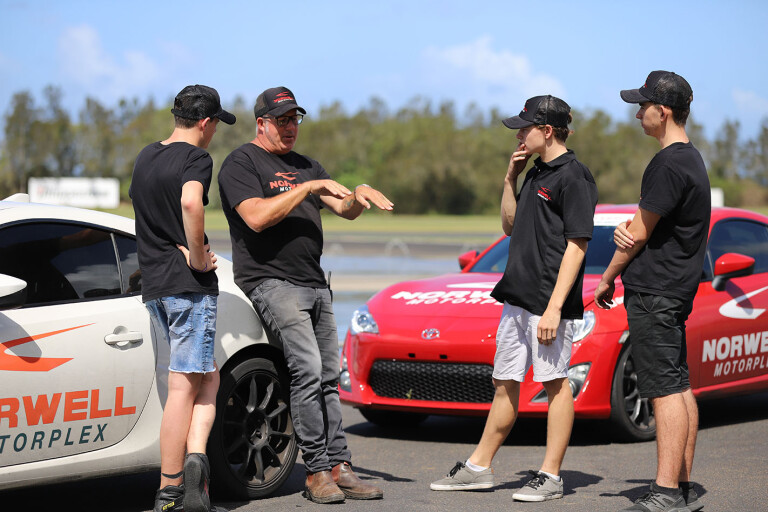
The first major pupil to graduate from The Dude’s University of Hard Racing was Anton de Pasquale (pictured left). Morris helped save the youngster from being just another talented Australian rejected by the high-cost European junior open-wheel sausage factory. With his measured guidance, de Pasquale has been turned into the hottest young talent in the Aussie Supercars paddock. Morris’s latest protégé, Broc Feeney, has gone from racing karts in 2017, to a Bathurst 1000 co-driver gig alongside James Courtney (small world) in 2020 – and he hasn’t even graduated from high school. Morris clearly has the Midas touch when it comes to fostering talent.
“When Anton came along, me and him just clicked,” Morris tells Wheels. “He realized that if he listened to what I had to say, that we’d get results. That relationship was one where we both had a lot of confidence in each other and I got immense enjoyment out of him winning races and being a part of watching him succeed.”
Morris realised within half an hour of observing de Pasquale that he was watching something special. He started working on a deal to get him into Supercars that very afternoon. The 24-year old Melburnian has thrived thanks to Morris’s instruction style which, unusually, forgoes hard data for raw feel and wisdom.
De Pasquale says this allows him to focus on building a complete skillset, instead of focusing on solitary talents that need combining later. “Paul’s training is different to what I experienced in Europe,” says de Pasquale. “It was a free-flowing conversation and very progressive and natural.”
With more than two decades of professional motorsport under his belt, Morris has a deep well of knowledge to call upon when instructing from the passenger seat. “A car is just a machine that responds to inputs,” he explains. “It’s no different than an excavator or a bobcat, a helicopter or a plane. If you put the right inputs into it, that result will pop out.”
Baird says there is an innate teaching quality that Morris possesses, allowing him to transfer decades of hard-earned racing knowledge into the young minds of his pupils. “He has got a way to get someone to balance a car that you don’t get elsewhere,” the racer-turned-Supercar sheriff adds. “Race drivers, it doesn’t matter who it is, start to get into bad habits and rush things. So, Paul just takes you back to basics, and runs you through things you may not be actively thinking about. If you are new to the sport, that’s a massive help.”

It’s not just youngsters that come in for a Morris tune-up. The likes of Shane van Gisbergen, Nick Percat, and Chaz Mostert have all spent time at Norwell Motorplex refining their talents. Baird says it’s all about stripping away the excess noise of a race weekend and getting back to the core of driving fast. “You sometimes just forget the basics because you’ve always got 20 guys running around with laptops telling you how to fly the space shuttle,” he says. “But [the engineers] don’t actually know, they are just looking at data, whereas Paul can actually feel it.”
Morris’s desire to coach stems in part from the strong bond he formed with Frank Gardner early in his career. A statesman of Australian motorsport, Gardner forged a strong career overseas and founded Morris’s Norwell complex. Gardner passed many of his wisdoms onto Morris, who in turn is now flowing that knowledge into the next generation. “For me it was, I had all this information, I’ve stopped racing now, what am I going to do with it? Oh, well, I don’t need to compete against those guys, but let’s see if we can make better drivers,” Morris adds.
Paul’s father, Terry, was a founding member of the Gippsland Car Club in Victoria, and helped build the original Morwell Hill Climb. In 1976, the family moved north to the Gold Coast, and lived not far from Surfers Paradise International Raceway and its associated dirt speedway. It’s here that Paul began his racing career competing in speedway bombers. At the same time Terry was building what would become the Morris family empire, including the incredibly successful Sirromet wine business. This would, in part, help fund Paul’s racing career.
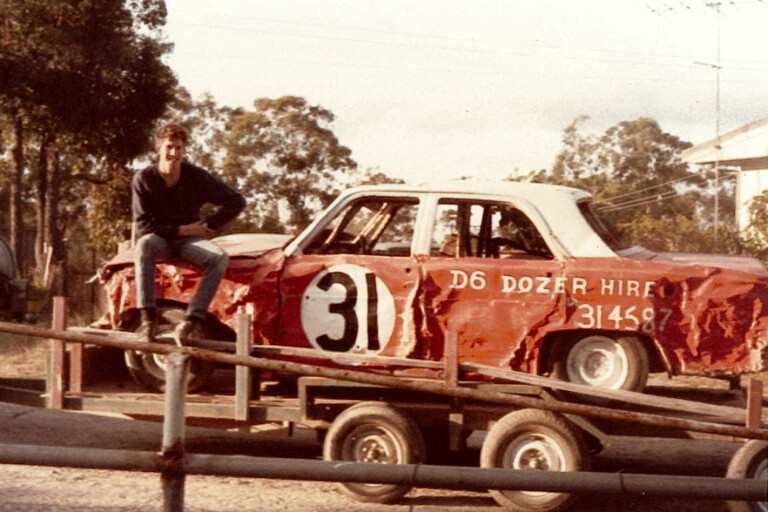
Baird says Morris’s gruff exterior was designed in part to deflect any criticism that he may have been raised with a silver spoon. “[Paul] always says, ‘I chose my parents well’”, Baird explains. “I think in a lot of ways he acted a bit rougher than he was just for the sake of not wanting to be seen to not come from a hard-working family. His dad was an old school hard worker who made his money in one way, shape, or form, and Paul is exactly the same. They didn’t just fall into money, so they both appreciate what hard work is.”
The same salt of the earth personality that hides Morris’s well-heeled upbringing is also perfect for lulling rivals into a false sense of mental superiority. Underestimate Morris’s mental prowess at your own peril. “What people don’t realise about Paul is he is the smartest bloke in the pitlane,” Baird adds. “He knows exactly what everyone else is doing, why they are doing it, and how they are doing it. He will walk around pretending he doesn’t know, doesn’t look, and doesn’t see, but he knows exactly what is going on. Anyone that thinks Paul is a dummy, is a dummy.”
Morris’s bad boy reputation isn’t without merit, but it has overshadowed his strategic expertise. He partnered with Chaz Mostert for the 2014 Bathurst 1000, and won after starting last on the grid in one of the most dramatic finishes in the race’s history. While Mostert put in the glory laps, Morris was responsible for quietly devising and implementing the strategy that would allow them to be in the right place at the right time.
While he has forged a strong career in Australia, Morris was initially on a path to international success, only to be deterred, perhaps perplexingly, by poor weather. After claiming his first two Super Tourer titles, Morris headed briefly to North America before going to Britain to take part in a test at the end of 1998 to replace Matt Neil at his family’s BTCC team.
“I stayed in Birmingham with Matt for about two weeks,” says Morris. “It was the middle of winter and that cured me of ever thinking of going there. I was like, ‘How the hell do you put up with this?’ I just couldn’t get out of the place quick enough.
“That deal was 90 percent done and then Matt had come home and said, ‘Mate, I got to talk to you. I’m not going to take the Volvo deal. I’m going to stay at my family team.’ I’m like, ‘Oh good, thank Christ.’”
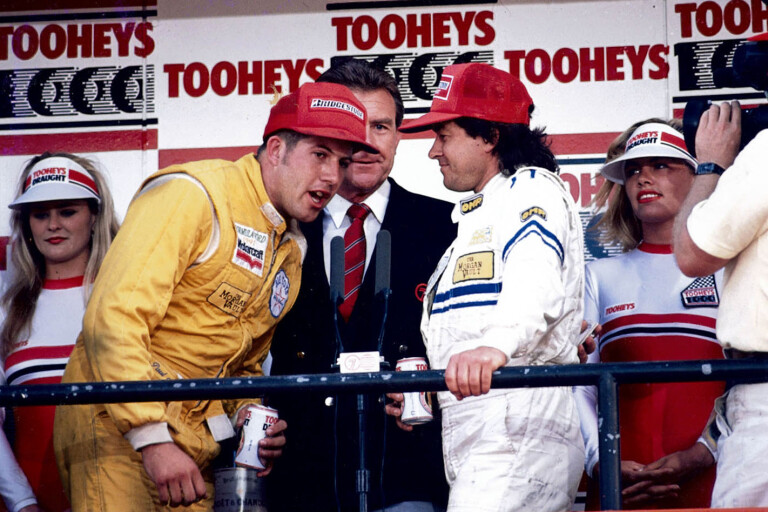
By 2000 he was back Down Under and competing full time in V8 Supercars with a squad he put together himself. That same year he was involved in a fiery crash at Oran Park. His stricken Holden was rammed from behind at the start of a race, spraying the track with fuel, which was promptly ignited. Morris suffered a number of fractured vertebrae. Despite the serious injuries, Morris didn’t miss a single round of the championship, returning to the grid three weeks later. He remains blasé about his recovery.
“Oh, it was painful, mate, but people are just soft these days,” he says. “They get a splinter and the next thing they’re on work cover. I don’t know, for me to make it to the next race and turn up and try and race was more important than any long-term injury I’d have. I couldn’t think of sitting it out. If I could get out of the bed and make it to the track and drive the car, that’s all I wanted to do. That was more important than anything.
“The sport was gladiatorial back then,” he remembers wistfully.
With that old-school mentality, and an ability to communicate decades of experience, it’s little wonder that Morris’s students are some of the hottest talents in racing today.
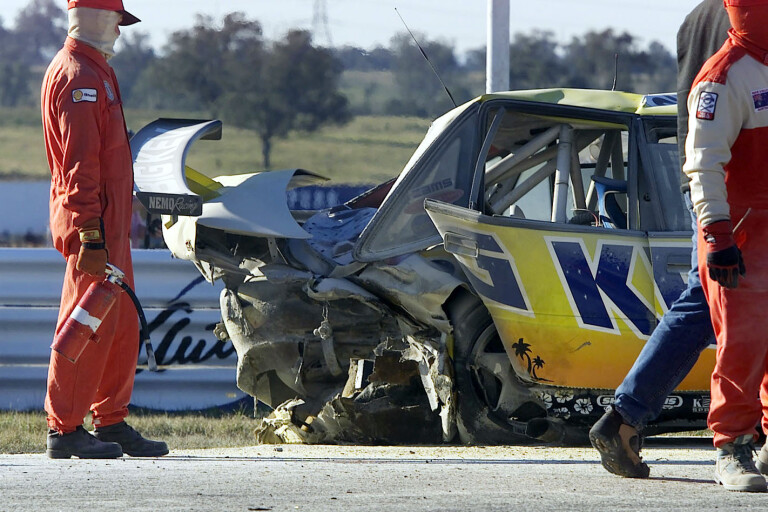
NORWELL, THE RACER’S UNIVERSITY: AKA THE WORLD’S COOLEST CLASSROOM
Founded by Frank Gardner in the late ’80s, and now owned and run by Morris, the Norwell Motorplex is located just north of the Gold Coast. Its centrepiece is a 2.2km circuit, capable of running in both clockwise and anti-clockwise directions. A $4 million expansion began in 2016, which will culminate in a track extension lengthening the circuit to 4km. At the centre of the facility is a polished cement skid pan which can be run in wet and dry conditions, along with a mechanical turntable that can induce forced oversteer. Morris houses multiple vehicles for driver training at the facility, ranging from standard road cars to full-blown racers.
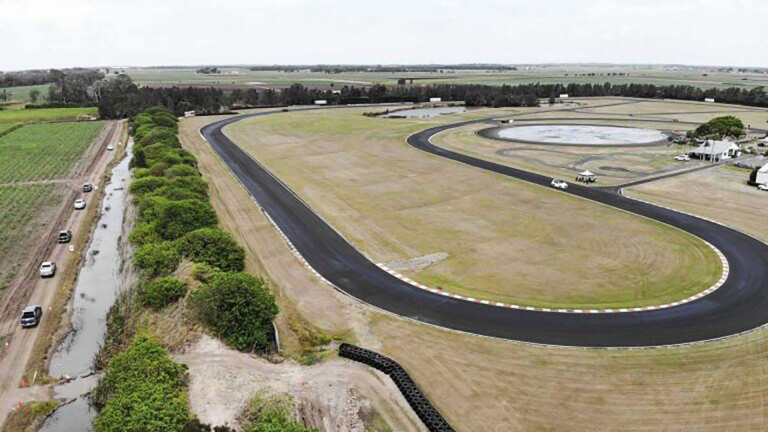
HOW TO GET PUNCHED IN THE HEAD BY YOUR TEAM BOSS IN FOUR SIMPLE STEPS
- Knock Knock: In the dying laps, Longhurst taps Morris, unsettling the rear of the leading BMW. This allows Longhurst to get a run heading into the next straight.
- Who’s there?: Running side-by-side the pair lock wheels. At this point, a crash is inevitable as steering wheels are wrenched from their driver’s hands.
- Broken race cars: Both BMWs spear off track into the concrete barrier. Longhurst’s car had barely stopped before he was out of the car and throwing fists.
- And flying fists: Officials disqualified the team owner and eventual champion from the entire event. By virtue of the red flag, Morris was declared the race winner.
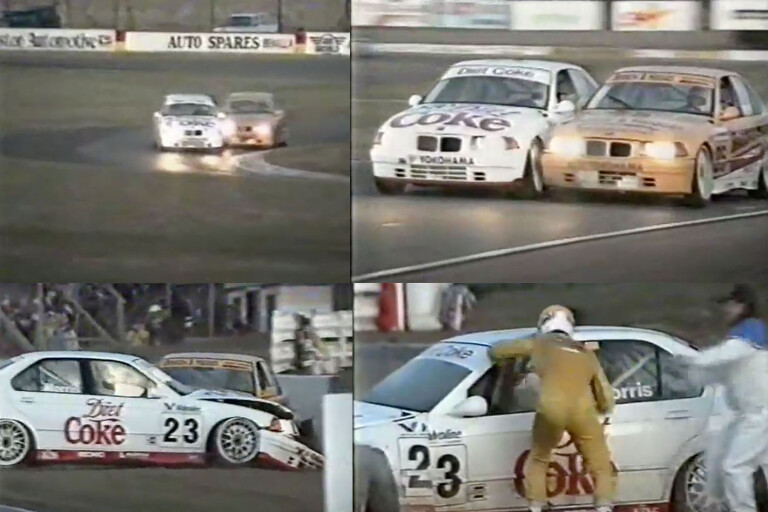

COMMENTS